Building
ZwingerTheaterplatz 1
01067 Dresden
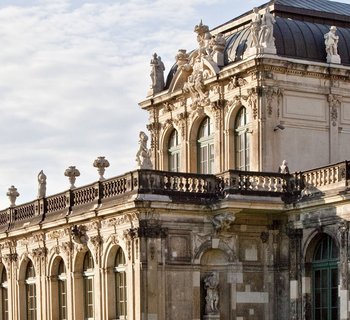
Other than the Frauenkirche (Church of Our Lady), the Zwinger is the most popular destination for visitors to Dresden. It’s no wonder because the ensemble with gardens and a fountain is considered one of Germany’s most important Baroque architectures. The name Zwinger refers to the original position of the complex, between the inner and outer fortress wall. Yet for August the Strong, the structure’s defensive function was already less important than the element of pleasure. He wanted to import his orange trees from Leipzig and plant them in Dresden on several terraces.
Starting from this orangerie, extensive pleasure gardens were developed under the direction of Matthäus Daniel Pöppelmann between 1711 and 1728: He built three pavilions, curved galleries and the nymphs’ bath constructed from Elbe sandstone, which enclose the green spaces and ponds still today. Numerous sculptures are freestanding or adorn the buildings, most of them created by Balthasar Permoser (1651–1732). He created the Apollo and Daphne in the Grottensaal (Grotto Hall), the nymph with a shell in the nymphs’ bath, the figures of Vulcan and Ceres at the Kronentor (Crown Gate) as well as the world-famous Dresden Satyr-Hermaphrodite Group and the Hercules Saxonicus on the Wallpavillon, the pavilion near the rampart. Just as Hercules took the burden of the globe from Atlas so that Atlas could gather apples for him from the garden of the gods, August the Strong’s becoming imperial vicar was interpreted as a highly significant Herculean act.
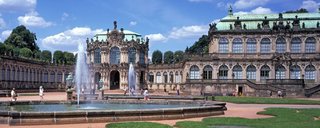
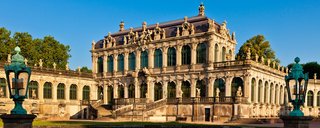

Originally, the structure was to help define the forecourt for a new palace. For this reason, the river side of the ensemble initially remained undeveloped and, until the death of August the Strong, the area was used for celebrations, concerts and theatre performances: In 1719, August’s son celebrated his wedding there. As early as 1728, the Zwinger was rededicated as a place of knowledge and became home to the natural science collections, the cabinet of prints and drawings and a library. In 1746, the Mathematisch-Physikalischer Salon (Mathematical-Physical Salon) was additionally established, and still today it can be visited here along with the Porzellansammlung (Porcelain Collection).
In 1855, Gottfried Semper undertook one of the most important museum projects of the nineteenth century with the building of the Semperbau (Semper Building) on the bank of the Elbe river. Still today, it houses the Gemäldegalerie Alte Meister (Old Masters Picture Gallery), and the Skulpturensammlung bis 1800 (Sculpture Collection until 1800). During the May Uprising in Dresden in 1849, the Zwinger burnt down to its foundation walls and was then rebuilt. And when Dresden was bombed in February 1945, the Zwinger suffered heavy damage and could only be restored in 1963.
ticket valid for: Old Masters Picture Gallery and Sculpture Collection up to 1800, Cabinet of Mathematical and Physical Instruments, Porcelain Collection at the Zwinger
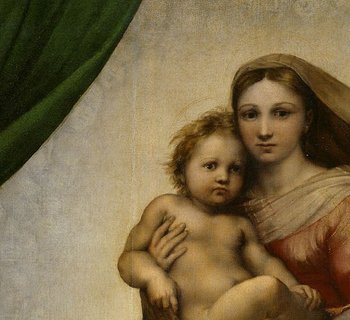
1728 gegründet, ist er bis heute eines der weltweit bedeutendsten Museen historischer wissenschaftlicher Instrumente
Learn more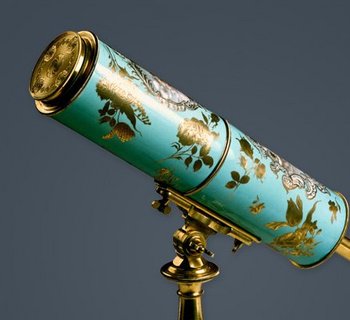
Porzellankunst aus China, Japan und Meissen, zu sehen im einzigartigen Dresdner Zwinger
Learn more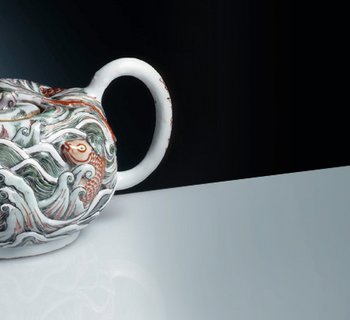
Zwinger
Theaterplatz 1
01067 Dresden